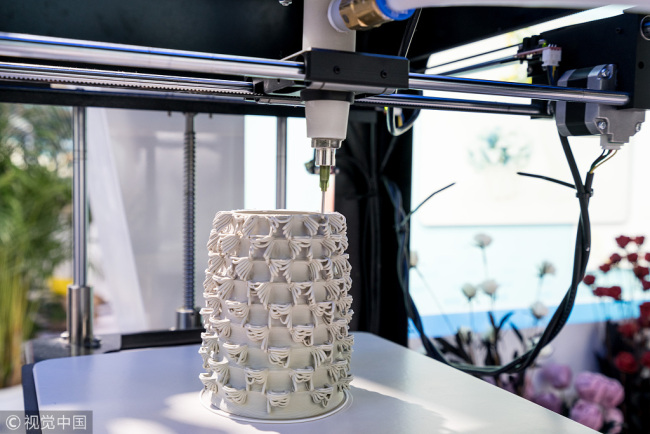![3D printed ceramic vase [Source: China Plus ]](https://fabbaloo.com/wp-content/uploads/2020/05/Contemporary2_img_5eb0960caebb1.png)
Cameron Torti and Charles Goulding of R&D Tax Savers discuss 3D printing in contemporary Chinese design.
China has historically been known for its ethnocentric mindset, drawing on inspiration for art and design almost entirely from within its own borders. They have a rich and extensive culture that reaches far into ancient times and the traditional styles developed have long dominated the design industry. Now, contemporary design is starting to explode. Since 1998 when IKEA launched its first store in the country, the people have been more open to outside influence and have learned a great deal from other cultures. Currently, there are roughly 17 million designers in China and 90 design schools. Almost 90,000 design students study abroad and 80 percent return, bringing with them cultural influences from across the globe.
The Target Market
In 2018, the Chinese home decoration and furniture market was estimated at $740B, according to a report by Yicai Media Group. Chinese millennials, a newly established middle class, are chiefly responsible for this immense demand. This age demographic is more educated and globalized than previous generations, resulting in a more westernized taste for design that still maintains many elements from traditional Chinese design. This trend has been named the “New Chinese” or “Huaren Design”. Young, urban Chinese are demanding sharp looking interiors that evoke culture, sophistication and minimalism.
Production via 3D printing
A lot of homes in China house several generations. This means that space can be tight and consumers demand space saving and practical use furniture. As a result, Chinese researchers have begun to delve into new designs like foldable furniture. A group has developed an algorithm that designs foldable pieces of furniture that are then easily 3D printed. These are not your standard folding chairs. They often fold at more than one angle and rely not just on hinges, but slants, disconnect parts, and compressing. Researchers believe it may be possible to print the pieces already folded and all in one piece.
![3D Printed table using 10% Bamboo fibers. [Source: Oak Ridge National Laboratory ]](https://fabbaloo.com/wp-content/uploads/2020/05/Contemporary_img_5eb0960d26afb.png)
Contemporary design is embracing the latest technologies such as 3D printing while keeping in mind the nation’s heritage. “New Chinese” design demands typical Chinese materials and new ones as well. Experimentation with materials such as ceramics and metal has started, and new ideas are being developed on how to work with other traditional materials such as bamboo, silk, clay and enamel. So far, bamboo has been successfully printed but woven with 90% non-bamboo material. Ceramics have found some success as well having been printed using a mixture of polymers and ceramic nanoparticles. Even so, printing with synthetic materials that maintain the aesthetic of these materials will likely prove to be lucrative due to less expensive inputs and a high appeal for the style. Additionally, genuine material may justify a premium price point.
As a hub for economic activity, China holds many offices for companies around the world. This means that office furniture is constantly being supplied. A two-child policy also means that parents want to supply their children with premium furniture. Overall economic growth has also led to new restaurant and hotel openings. Not having to export the furniture will also help the bottom line. All of these factors are contributing to the growth of the furniture industry in China and Chinese entrepreneurs may begin to seek foreign markets as well. Increased utilization of traditional Chinese materials in the United States could be supported by the R&D tax credit. Companies engaging in 3D printing methods are likely eligible for the credit.
The Research & Development Tax Credit
Enacted in 1981, the now permanent Federal Research and Development (R&D) Tax Credit allows a credit that typically ranges from 4%-7% of eligible spending for new and improved products and processes. Qualified research must meet the following four criteria:
-
Must be technological in nature
-
Must be a component of the taxpayer’s business
-
Must represent R&D in the experimental sense and generally includes all such costs related to the development or improvement of a product or process
-
Must eliminate uncertainty through a process of experimentation that considers one or more alternatives
Eligible costs include U.S. employee wages, cost of supplies consumed in the R&D process, cost of pre-production testing, US contract research expenses, and certain costs associated with developing a patent.
On December 18, 2015, President Obama signed the PATH Act, making the R&D Tax Credit permanent. Beginning in 2016, the R&D credit can be used to offset Alternative Minimum tax for companies with revenue below $50MM and for the first time, startup businesses can obtain up to $250,000 per year in payroll taxes and cash rebates.
Conclusion
As 3D printing methods are honed and perfected, a supply of quality but inexpensively made furniture will reach many sectors and demographics, mainly millennials. Supporting the demand craze will be exceedingly feasible for China as they are the leading country in manufacturing and their 3D printing capabilities are ever growing. With the Chinese design community expanding as well, we should see many new innovative creations and processes emerge.











Kim Francois is the Corporate Business Development Director of Materialise China.